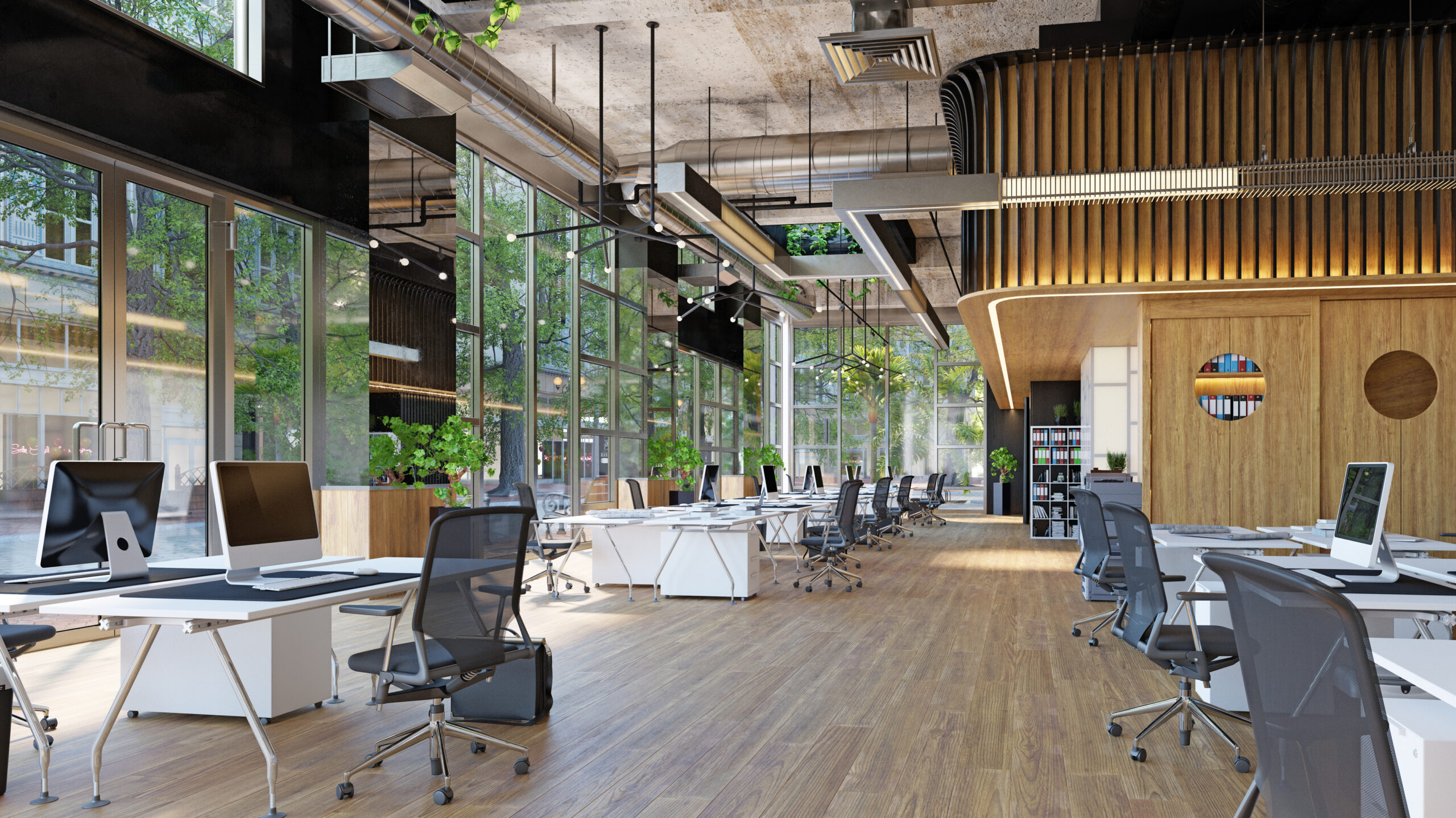It is no secret that workplaces today don’t look like they used to. With the rise of remote work and its impact on traditional office spaces, things are moving fast as companies pivot and try to keep up. Here are a few major trends to watch in the coworking industry.
Overview of Trends
There are four trends in coworking right now, which we’ll discuss in detail below.
- New landlords are entering the area, primarily consisting of building owners who suddenly have a lot of free space that they want to fill. Pivoting to coworking makes sense because it’s similar to what they were already doing, and they don’t have to change much to make coworking work for them. Landlords coming into coworking with a ton of extra space also have the resources to do things that smaller owners can’t, which impacts the number and quality of services they can provide.
- There is a focus on distributed services, mainly because having too many satellite offices doesn’t make sense for most companies. Coworking businesses need to figure out which supplies or equipment to provide at their locations, as well as where to locate their facilities.
- There are community concerns. Employees have different preferences and needs, especially in areas like social and financial wellness. Meeting these community needs and others will help define which coworking companies are leaders and which clients are more likely to abandon their spaces.
- Integration affects how easy it is for companies and individual users to take advantage of everything coworking can offer. Ease of use is a significant part of coworking’s appeal, especially for reserving space and equipment for special purposes.
Different Landlords
Traditional offices are emptying, especially in areas where businesses are finishing leases and moving to smaller spaces as more employees work remotely.
By 2018, the United States had over 97 billion square feet of floor space in a little less than 6 million commercial buildings, and that number will keep going up. Even a low percentage change in occupied space is a massive amount of total area and worth quite a lot of money.
The biggest problem for many commercial space owners is the prospect of having current clients leaving and nobody interested in coming to replace them. Having too low of an occupancy rate threatens not just their bottom line but also their ownership of the building.
Considering this, it’s no surprise landlords want to find new ways to fill space and keep occupancy up. That’s why one of the current coworking trends is commercial landlords renting out space for coworking, with landlords entering the business directly instead of hiring someone else to manage it.
A particularly notable characteristic here is the availability of buildings with good coworking facilities. Most of these offices:
- Rent out the furniture and equipment that people may need
- Offer comforts and luxuries
- Provide high-speed internet
- Feature a professional, yet relaxing atmosphere
- Offer easy access to office supplies
- Are located near restaurants and support businesses
Commercial spaces usually have better access to support businesses than if someone was working from home, so this is something that can set new landlords apart from each other.
As companies continue adjusting, we may see a move towards consolidation with companies that offer coworking spaces across the country or even the world. If companies can save enough money by switching strategies and using less space, they may begin converting some of those savings into perks or benefits that make coworking even more attractive.
For example, higher-quality office management services might offer better in-office meals or even a private delivery service. The focus here is that coworking facilities need to be good enough to tempt people out of their houses, which means offering something people can’t get at home.
As this trend continues, we may see coworking spaces start to stratify into different levels based on their overall comfort and services. Landlords may even split a single large office space into several zones, with ‘premium’ users having noticeably better facilities.
The twist here is that some landlords simply have far more space than others. A small coworking landlord may have a few acres of space, but a landlord who owns most or all of a major commercial building simply has more options and opportunities.
As they enter the business, chances are they’ll start offering new benefits that others can’t.
Another thing we may see with landlords entering the business is some form of space exchange. For coworking services, the real value is having many different locations rather than concentrating all the space in one building. This is an issue for landlords who own space in one spot.
To deal with this, landlords may set up a kind of exchange, allowing them to use space in each other’s buildings. As direct owners, they can make deals in different ways than non-landlord coworking companies, especially when it comes to allocating and adjusting space to meet the needs of each company.
Landlords can even allow non-exclusive access to spaces, making it more viable for smaller coworking companies to access space and start providing services.
In summary, it’s almost impossible to overstate how much of an impact new landlords could have on the coworking industry. Many are already pivoting to this approach, so the question is less of whether they’ll have an impact but rather how far they’ll go.
Distributed Services
Similarly, companies may focus on having more small offices. This can be challenging because prices vary across the country, and some places with high real estate costs may not have enough employees to justify the pricing.
Coworking can fill the desire for having distributed services and offices without needing to go as far as leasing all of those locations. With enough options, a company can keep its employees in a particular area together.
A more notable trend with distributed services is that they might provide access to equipment and services that a company never considered before.
Coworking locations usually try to be flexible enough to appeal to as many potential users as possible. This means they tend to have high-speed internet, reconfigurable spaces, and printers, but they may also offer newer conferencing equipment or access to subscription software.
The primary consideration for companies is understanding who needs to be together and who can work fine when they’re apart. A janitor can’t work remotely because they can’t clean from five states away, but a customer service agent can work from almost anywhere.
On the other hand, tech employees might prefer working remotely, but they may need to be available to manage physical hardware, brainstorm or resolve problems.
The viability of distributed services varies depending on the company and factors, such as:
- Number of employees
- What the company does
- The kind of people they have for each role
Some businesses are switching entirely to distributed services, offering 100 percent remote work. In these cases, coworking spaces can be appealing to executives and other senior workers who prefer a professional environment.
Coworking facilities can easily accommodate more luxurious offices and equipment on request.
As a secondary consideration, coworking facilities can be good places to meet clients. Having nowhere to receive important guests is an issue for some businesses, so even if companies don’t normally work at a coworking facility, renting out some space now and then may become necessary.
Community Concerns
One thing that’s become increasingly clear over the last few years is that employees have different preferences for work environments. Some people prefer working entirely from home, especially if they have children or pets they’re trying to take care of. Others enjoy a hybrid approach, and some companies are trying to create offices worth returning to.
Company wellness initiatives need to understand and address all of these needs, from physical and intellectual to social, emotional, and environmental.
One primary area coworking causes fulfillment is the opportunity to share a workspace with people who aren’t part of the worker’s company. That allows workers to be social without the risk of bothering any of their coworkers or affecting internal projects as much.
Talking to people outside their company can also help remote workers relax. With fellow employees, there’s always a concern about command structure, assigned roles, and similar matters. That doesn’t apply when they’re talking to someone outside the business.
Coworking can also provide expertise when employees make friendships outside of their fellow employees. Workers from other companies may have creative ideas and insights that can help solve problems. A regular series of new ideas can also help employees feel more creative and productive.
Coworking facilities can address community needs in other ways as well. For example, financial wellness is a primary concern these days, especially with rising costs for housing and basic goods. Coworking locations can sponsor guest speakers and other forms of help that directly benefit users.
Advisors and guest speakers can also use the coworking facilities to communicate with the rest of the company, meaning the benefits aren’t limited to workers at one location. This kind of remote access expands the talent pool that companies have access to, ultimately making the coworking industry more practical and flexible.
Integration Acceleration
How much time do you want to spend creating manuals to help people access systems, guidelines, inventory and office equipment from dozens of different coworking destinations?
If that sounds like it could be troublesome, you’re not alone in feeling that way. One of the more notable coworking industry trends is the goal of making a single interface that everyone can use, regardless of where they’re working.
The keyword here is everyone. That includes workers who have special needs or frequently travel around the country. The real goal here is to make coworking as easy as possible. If people need to train for days or weeks to even start coworking, they may opt to stay home instead. Coworking companies, as expected, want to avoid that.
One of the biggest issues for coworking is managing access to the facility. Employees want to feel safe and secure in their working environment, even if they’re sharing it in a partially public area.
Aside from ensuring only authorized people can enter, coworking facilities are improving things like updating systems to show when things become available. With the correct setup, a coworking facility can also communicate with other locations to reserve meeting rooms at all of them. This matters when employees on both sides need a special facility.
Managing this is much easier when it’s all done internally, so there’s an obvious benefit to businesses that collaborate with coworking companies with many locations. Companies that require more specialized facilities will naturally gravitate towards coworking companies that can support this.
Coworking companies are also working on accounting and payment systems. Coworking can be highly unpredictable for any one client. Some people may come in on near-random days, while other employees from the company may come in four or five days a week.
Keeping track of facility use and simplifying a key concern for ensuring that coworking remains viable. Many corporate clients may turn to prepay for facility use, while others are likely to wait for an invoice so they can check the use of time. Fortunately, software platforms such as CoWello make these complexities easier to manage.
Conclusion
Coworking is here to stay. Remote work is statistically more productive for companies, and coworking is part of enabling that. It’s unlikely that many businesses will go back to an office-only setup, especially once current leases end and they no longer have a financial reason to continue.
Understanding the current trends is important, though. Coworking’s three primary segments – companies, users, and providers – have different interests and needs. The intersection of these is what’s driving the current trends, and things are likely to continue changing until the entire model stabilizes and consolidates.




